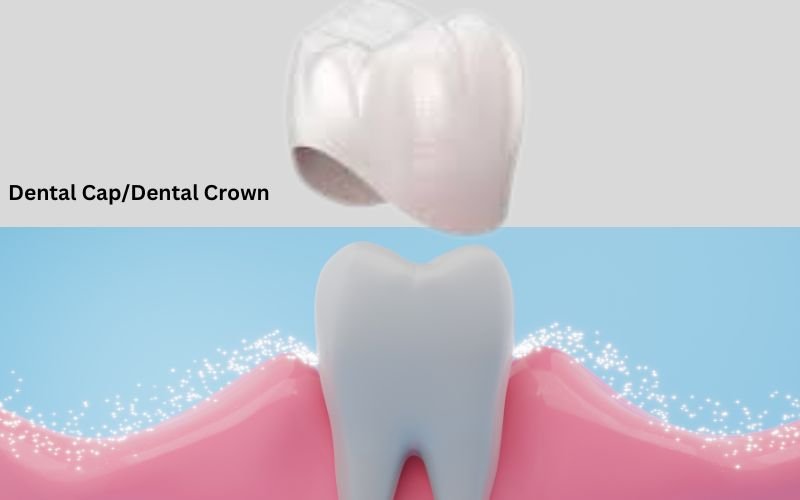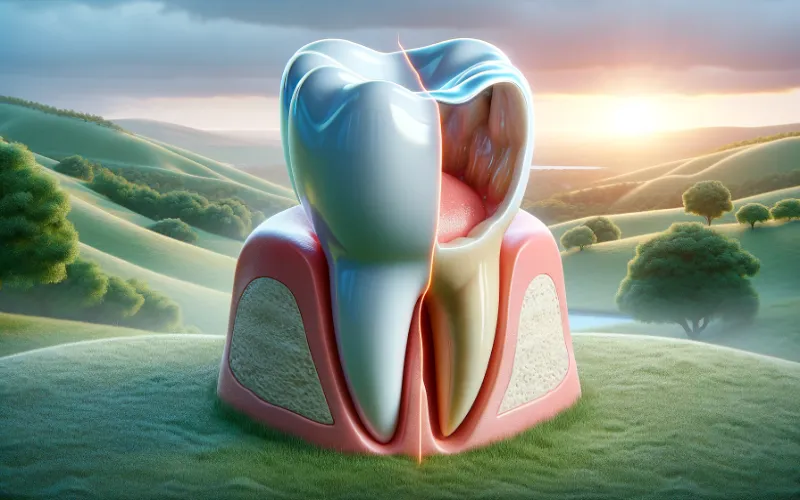The terms “crown” and “cap” are often used interchangeably in dental restorations, leading to patient confusion. Understanding these differences can help make informed decisions about dental care. This article delves into the distinctions, benefits, and considerations surrounding crowns and caps, providing a comprehensive guide for those looking to restore their smiles.
Dental Crown
A dental crown is a tooth-shaped “cap” that is placed over a tooth to restore its shape, size, strength, and appearance.
- Purpose: Crowns are used to protect a weak tooth from breaking, to restore a broken tooth, to cover and support a tooth with a large filling, to hold a dental bridge in place, to cover misshaped or severely discolored teeth, or to cover a dental implant.
- Material: Crowns can be made from various materials including porcelain, ceramic, metal alloys, and composite resin. Porcelain or ceramic crowns are often preferred for their natural appearance.
- Application: The tooth is typically filed down and shaped to fit the crown, which is then permanently cemented in place.
Dental Cap
A dental cap is essentially another term for a dental crown. However, “cap” is a more informal term that might be used by patients or in less formal discussions.

Historical Background of Dental Crowns and Caps
Dental crowns and caps have a long history, dating back to ancient civilizations. Early dental practitioners used materials like gold and ivory to create primitive crowns. The evolution of dental technology has refined these techniques, developing more durable and aesthetically pleasing materials. The journey from rudimentary crowns to modern-day prosthetics highlights significant advancements in dental care. In ancient times, Etruscans were known for using gold to fabricate dental crowns, demonstrating their advanced understanding of dental restorations.
Over the centuries, advancements in materials science and dental technology have created crowns and caps made from high-strength ceramics and metal alloys, offering enhanced durability, biocompatibility, and aesthetic appeal.
Materials Used in Crowns and Caps
Crowns and caps can be made from various materials, offering distinct advantages. Common materials include:

- Porcelain: Known for its natural appearance, porcelain is a popular choice for visible teeth.
- Ceramic: Similar to porcelain, ceramic offers a natural and highly durable look.
- Metal Alloys: Metals like gold, platinum, and base-metal alloys are used for their strength and longevity, often in molars where aesthetics are less critical.
- Composite Resin: A more affordable option, composite resin can be color-matched to natural teeth but may not last as long as other materials.
The Procedure for Applying Crowns and Caps
The process of applying crowns and caps involves several steps:
- Initial Assessment: The dentist examines the tooth and discusses options with the patient.
- Preparation: The tooth is shaped to accommodate the crown or cap. This may involve filing down the tooth or building it up if it is damaged.
- Impression: An impression of the prepared tooth is taken to create a custom-fit crown or cap.
- Temporary Crown/Cap: A temporary crown or cap is placed to protect the tooth while the permanent restoration is being made.
- Placement: Once the permanent crown or cap is ready, it is fitted, adjusted, and cemented into place.
Benefits and Drawbacks of Crowns
Crowns offer robust solutions for severe dental issues, providing comprehensive coverage and support. However, they also come with higher costs and a more invasive application process.
| Aspect | Benefits | Drawbacks |
| Protection | Provides comprehensive protection and support for damaged teeth. | More expensive than other types of dental restorations. |
| Aesthetics | Can improve the aesthetic appearance of teeth. | The procedure can be invasive and time-consuming. |
| Durability | Long-lasting with proper care. | Involves significant tooth preparation. |
| Functionality | Restores full functionality of the tooth. | It may cause temporary sensitivity post-procedure. |
| Material Options | Available in various materials (porcelain, ceramic, metal). | Only some materials are suitable for some patients. |
| Stability | Provides stability to teeth with large fillings or root canals. | Requires multiple dental visits. |
| Custom Fit | Custom-made to fit the tooth perfectly. | It can be uncomfortable during the adjustment period. |
| Biocompatibility | Porcelain and ceramic crowns are biocompatible, reducing allergic reactions. | Some patients may be allergic to certain metals used in crowns. |
Cost Considerations
The cost of crowns and caps varies widely depending on the materials used and the complexity of the procedure. Porcelain and ceramic crowns are more expensive than metal or composite options. Insurance coverage can also influence the overall cost, so it’s important to review your dental insurance policy and discuss payment options with your dentist.
Post-Procedure Care and Maintenance
Proper care and maintenance are crucial for the longevity of crowns and caps. This includes regular brushing and flossing, avoiding hard or sticky foods that could damage the restoration, and attending regular dental check-ups. Also, a night guard may be recommended if you grind your teeth during sleep. It’s also important to avoid habits such as chewing on ice, pens, or fingernails, which can compromise the integrity of the crowns or caps. Regular professional cleanings and examinations allow the dentist to monitor the condition of the restorations and address any issues before they escalate, ensuring the longevity and functionality of the dental work.
Conclusion
Understanding the nuances between crowns and caps can empower patients to make informed decisions about their dental health. Both options offer valuable solutions for restoring damaged teeth, each with its unique benefits and considerations. By consulting with a dental professional and weighing the pros and cons, patients can choose the restoration method that best suits their needs, ensuring a healthier and more radiant smile.

Dr. Orion Johnson is a dedicated and compassionate dentist committed to providing exceptional dental care to his patients.Dr. Johnson obtained his Doctor of Dental Surgery (DDS) degree from a prestigious dental school, where he excelled academically and clinically. He is licensed to practice dentistry and stays updated with the technology through continuing education and training.
